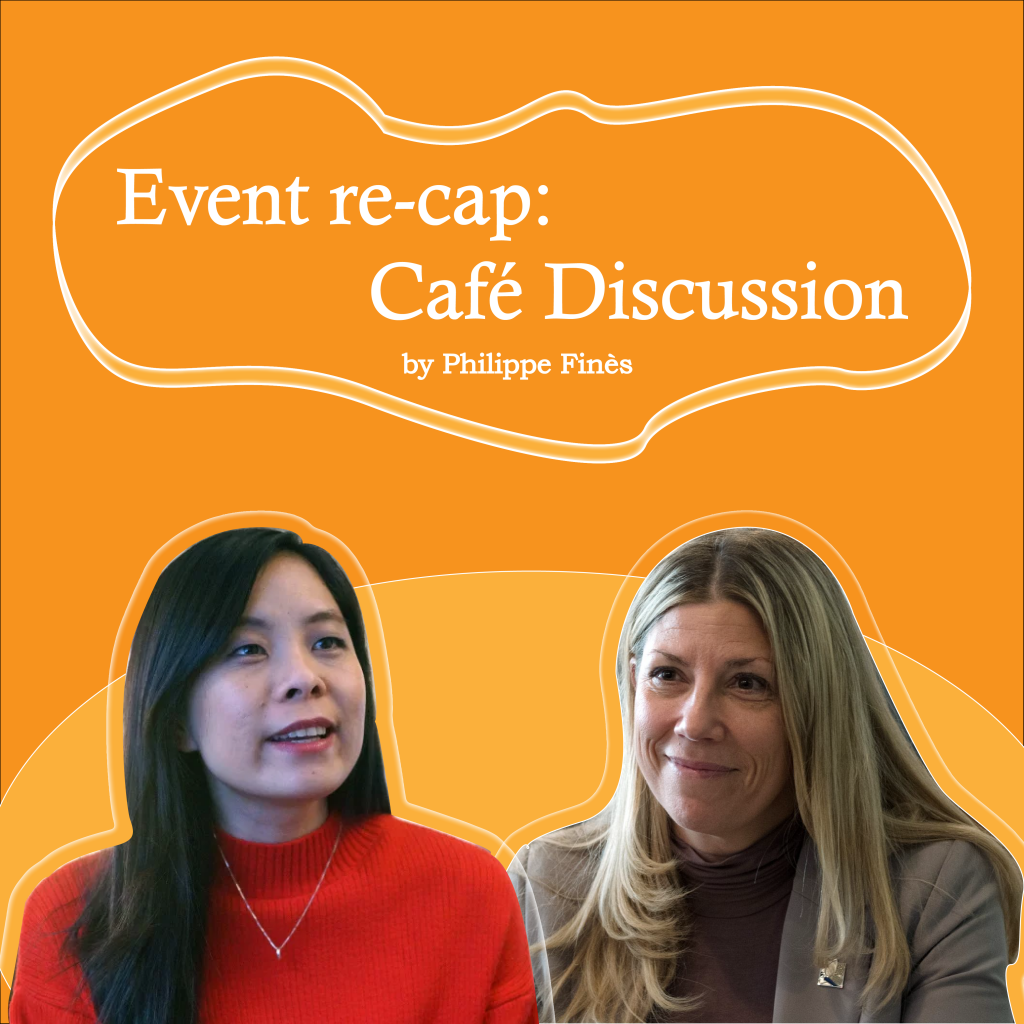This piece was submitted to the Citizen Journal project of the Peter-McGill Community Council. Please note that the opinions expressed in these articles do not necessarily reflect those of our organization. This project aims to create space for the voices of residents, students and friends of the neighbourhood through articles, photos, videos, and podcasts in any language. Are you interested in contributing? Contact us at benevolat@petermcgill.org!
On March 3rd there was a café-discussion about green spaces in Peter-McGill. This virtual meeting can be described as a 3-act play.
First, the setting. Since it was a virtual meeting with Zoom, typical problems were expected to happen – bad connection, bad microphones, bad cameras, etc. However, this was not the case. I must mention that the master of ceremonies, Andrew Faber, led perfectly well the meeting and kept everyone’s attention until the end. There were about 40 persons in the audience – more women than men, likely as many francophones than anglophones. All ages were present.

Opening Act 1, Lou Gloanec, from Peter-McGill’s Neighbourhood Committee, presented “(Î)lots de nature – From forgotten lot to green spot” project. This project aims to “Fight urban “heat islands”, Create green lungs in downtown Montreal, Fight food insecurity and Democratize urban agriculture and the development of public spaces”. To that end, the project proposes to convert into green spaces several spots in Peter-McGill which are not very well used presently. Some of the lots are small but that does not stop the proposers to envision transforming them into urban agriculture gardens, shaded spots or parks. Lou’s team selected several spots in all Peter-McGill that could be potentially transformed into green spaces, among them Saint-Mathieu, Summerhill and Saint-Jacques streets as well as The Boulevard.
Changing the pace in Act 2, entered the two main characters: municipal councillor Cathy Wong (cathy.wong@montreal.ca) and provincial MNA (Westmount – Saint-Louis) Jennifer Maccarone (jennifer.Maccarone.WSL@assnat.qc.ca). They were first invited by the master of ceremonies to comment on the project presented in Act 1, then to answer questions from the audience. Although the format of the café-discussion might have been constraining, both made their comments in French and in English out of respect for the audience.
- Cathy explained that she has lived in the neighbourhood for 3 years, and because of that she has been able to visit every part of it. Even before pandemic started, many urban development projects were already identified, such as Percy-Walters park and the school on the site of the Sulpicians’ Grand Séminaire (at Atwater and Sherbrooke). She is very voluble, clearly masters her files and gives incredibly detailed information. She insisted a lot on the fact that green spaces are important for her. She also said that for many projects, Montréal is not alone and needs the collaboration of developers and the Québec Government.
- Jennifer reiterated that green spaces in Montréal are a priority for the Québec Government, while specifying that she keeps contact with her fellow ministers to move forward the proposed projects. In particularly, she deplored that, regarding the Sulpicians’ site, the minister of Education (M. Jean-François Roberge) did not have good news for now. However, as Jennifer mentioned, monies for the school service center are already budgeted, which is a good sign.
Questions from the audience were about specific matters on green spaces as well as on related topics such as food security and homelessness. The question regarding whether developers must include green spaces in their new projects also arose. It became easy to conclude that green spaces are far more wide-reaching and multidisciplinary than at first sight: the goal is to develop living environments in which all social and community aspects are taken into account.
This second act ended when Cathy Wong made the inventory of the main green spaces presently being developed by city of Montréal:
- Henri-Dunant park, Toe-Blake park, cultural and community centre Sanaaq (close to Cabot Square)
- Victor-Hugo street
- Percy-Walters park
- Ville-Marie park (the one that borders Ville-Marie highway): temporary installments are planned for this summer.
In Act 3, Christa Smith, from Peter-McGill’s Neighbourhood Committee, described 5 ways to get involved as a resident:
- Make time to vote on the “(Î)lots de nature – From forgotten lot to green spot” project if a vote is needed;
- Become a volunteer at Peter-McGill’s Neighbourhood Committee (contact: benevolatpetermcgill@gmail.com). I can attest that it is a very gratifying experience!
- Answer questions that we may receive by email about green spaces and other topics;
- Share with neighbours and friends what we learned about green spaces in Peter-McGill;
- Be present in cafés-discussion (as we did today).
In a nutshell, this meeting went well, and everyone came out of it better informed and enthused for the next steps. Well, almost: the big loser was … Concordia University. The institution still refuses – despite intensive negotiations – to allow access to its Grey Nuns site. There is a nice large park that could be used for many purposes while maintaining safe social distancing. This veto disappoints Cathy Wong very much. One person in the audience added that the University wanted to keep this site for its students, even during the thick of pandemic, when no student was on the campus at all! Quite a lack of manners! Let us hope to see a better cooperation in the future!
Philippe Finès